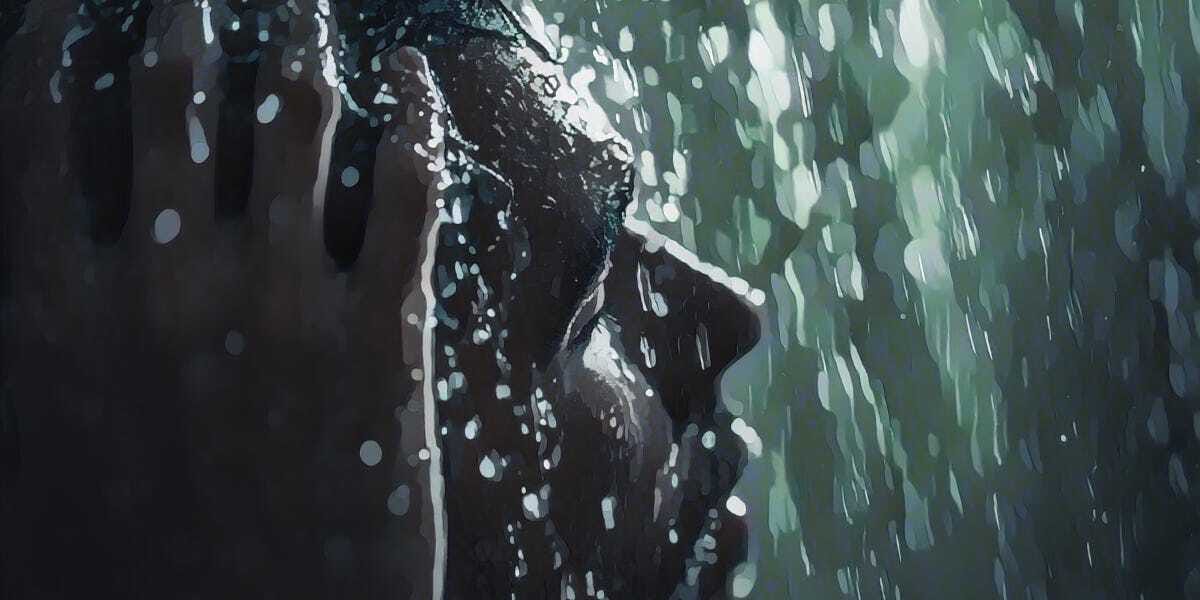
I was first introduced to cold exposure when I learned about the Wim Hof Method, which essentially focuses on breathing techniques and deliberate cold exposure.
Cold exposure has been, and continues to be, one of the most effective tools in my experience for managing anxiety, both in the short and long term. It has become a non-negotiable habit, transforming my approach to mental health and resilience.
Why Is Cold Exposure So Special?
The impact of cold exposure is profound. To truly convey its power, however, I’d like to share a personal story about anxiety and a panic attack. This experience highlights why this practice is so important to me.
One Sunday, I went for a hike with my wife. The weather was perfect, and the path through stunning vineyards was breathtaking. The route was pleasant and far from challenging, yet I couldn’t fully enjoy it, too preoccupied with the fear of having a panic attack in the middle of nowhere.
As I mentioned in a previous post, constantly monitoring my pulse had become one of my controlling habits, and this hike was no exception. Instead of enjoying the beautiful landscapes and good weather with my wife, I fixated on keeping my heart rate at what I deemed a “safe” level. This obsession only fuelled my anxiety, and by focusing so much on the fear of a panic attack, I eventually triggered one later that day. We finished the hike, but I had mentally missed most of it.

While driving home, with me behind the wheel, the panic attack I had dreaded hit halfway through the journey. It was so intense that I asked my wife to take over driving. We had to stop a couple of times so I could catch my breath, as I didn’t feel safe continuing.
On our way home, the anxiety persisted. We stopped at a restaurant, where I tried to calm down. However, obsessively monitoring my heart rate only made things worse. I then tried box breathing: 4-second inhales, a 4-second hold, and 4-second exhales. Although this helped me calm down enough to return to the car so my wife could continue driving, when we arrived home, my mind was still racing with worst-case scenarios. I still couldn’t break free, despite trying everything—breathing exercises and distractions like my phone or TV. That’s when a cold shower worked its magic.
Cold In, Anxiety Out
Desperate to break the cycle of anxiety, my wife encouraged me to take a cold shower. I’m so grateful to her for insisting and for remaining calm throughout the episode, which helped me immensely.
Lying on my back, I struggled to calm my racing thoughts through breathing alone; my mind was still consumed by anxiety. Finally, I stood up and stepped into the shower. The moment the cold water hit my body, my focus shifted entirely. The anxious thoughts of “my heart is beating too fast, I could die” vanished, replaced by the need to survive the cold I was exposing myself to. The brain struggles to focus on multiple intense tasks simultaneously, so this became my main focus.
For a couple of minutes, I experienced a strange mix of stress and calm. I was completely focused on breathing deeply to cope with the cold, which made the panic attack feel less significant than the challenge of surviving the cold water. How can I explain this today? The cold forced me to breathe deeply, the exact opposite of the shallow breathing that accompanies anxiety. Surprisingly, as my body adjusted to the cold, my breathing normalized, my anxious thoughts diminished, and my heart rate slowed significantly.
The Science Of Cold Exposure
The benefits of deliberate cold exposure are well supported by science, including a stronger immune system, weight loss, reduced stress, improved focus, and increased dopamine levels. Studies, like those summarized by Huberman Lab, support these claims.
One particularly helpful resource is an article from Huberman Lab, which not only explains the benefits but also offers a practical approach for beginners to start incorporating cold exposure into their lives. You can find it here: The Science and Use of Cold Exposure for Health and Performance https://hubermanlab.com/the-science-and-use-of-cold-exposure-for-health-and-performance/.
Building Resilience Through Cold Exposure
Cold exposure has become a non-negotiable habit for me. I no longer debate whether to do it—I just do it. It has taught me to embrace discomfort in other areas of life. Each time I deliberately step into this discomfort, both my body and mind grow stronger.
This practice is so valuable. Life is unpredictable and often challenging, so the more I acclimate to discomfort, the better prepared I am for whatever comes my way. It helps me let go of the need to control the uncontrollable—which, in reality, is most things in life.
By consistently choosing discomfort, I am building resilience that continues to shape how I navigate life’s uncertainties. Through cold exposure, I’ve not only found a tool to manage anxiety but also a way to embrace life’s challenges with greater confidence.